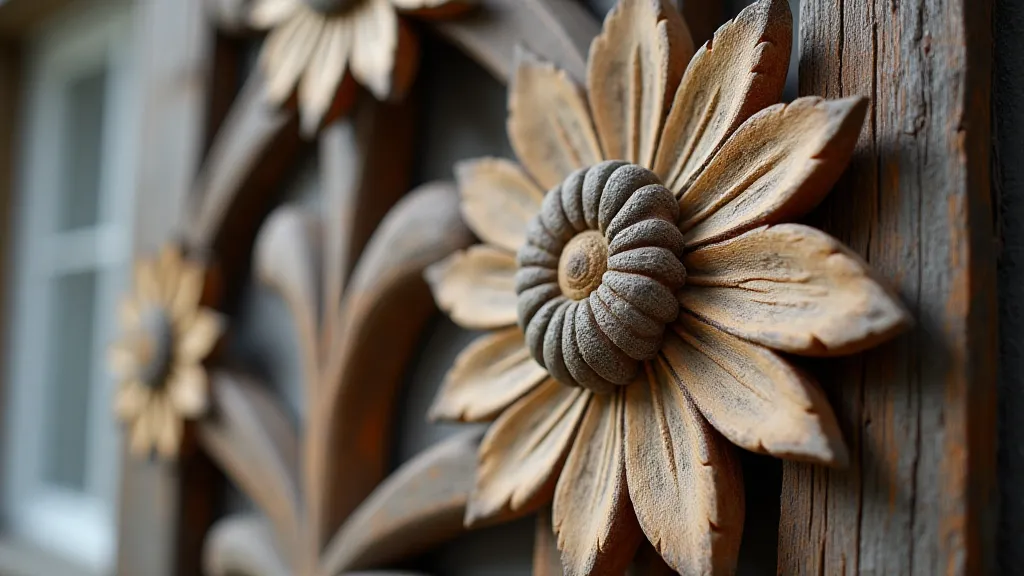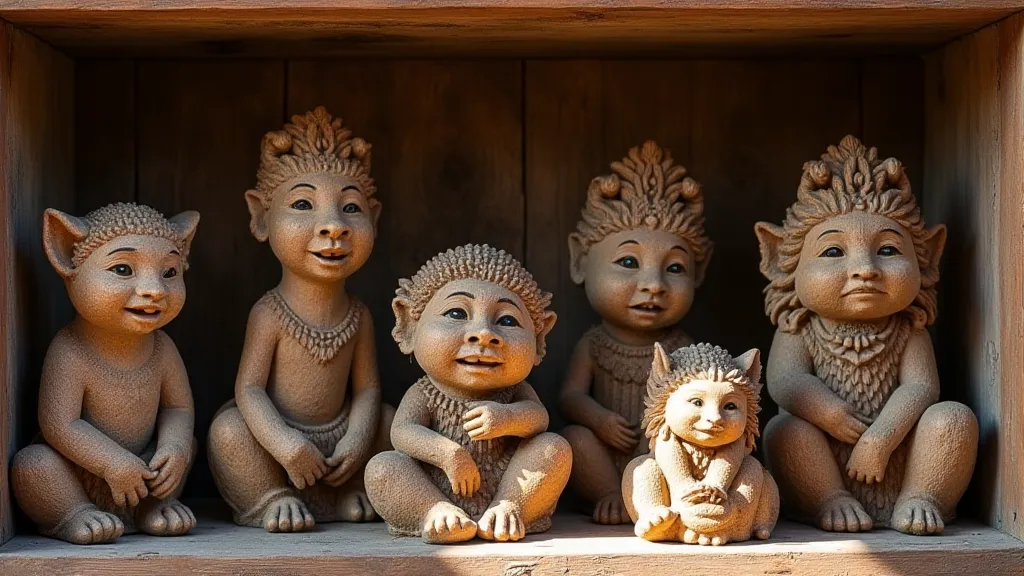The Echoes in the Grain: How Landscape Shapes Regional Carving Narratives
Wood carving, at its heart, is a dialogue. A conversation between the artisan and the wood itself. But less frequently acknowledged is the other participant in that conversation: the landscape that nurtured both the wood and the carver. For centuries, across the globe, the contours of mountains, the flow of rivers, the very types of trees that became canvases, have subtly, and sometimes dramatically, imprinted themselves onto the art of wood carving. It’s a beautiful, often unseen, narrative woven into the grain, an echo of the land in the hands of the craftsman.
I remember visiting a small workshop in the Austrian Alps as a child. The air was thick with the scent of pine and beeswax. The carver, a man named Herr Gruber, barely spoke a word, but his hands told stories. He was crafting a detail for a church altar – a single, exquisitely rendered edelweiss. It wasn’t just the flower itself he captured; it was the feeling of the high mountain meadows, the crisp air, the sheer resilience of life clinging to the rocky slopes. It struck me then, with a surprising clarity, that the edelweiss wasn’t just a motif; it was a symbol of the Alps, embedded in the wood by a man who knew them intimately.

The Rhythmic Pulse of the River Valleys
Consider the wood carving traditions of the Carpathian Mountains, stretching across Romania, Slovakia, and Ukraine. The region's landscape – rolling hills, dense forests, and swift-flowing rivers – profoundly shapes the carvings. Initially, tools were primitive, often utilizing sharpened stones and antler tools. This resulted in a preference for softer woods like linden and willow, readily available near the waterways. The styles are often characterized by a flowing, organic quality – animals intertwined with floral motifs, depicting scenes of rural life and folklore. The constant presence of the river, a vital source of life and transportation, influenced the themes of abundance and prosperity depicted in the carvings. There’s a looseness, a sense of movement, that mirrors the restless nature of the rivers themselves.
Contrast this with the more rigid, geometric patterns often found in the wood carving traditions of Scandinavia. The long, dark winters and stark landscapes fostered a different aesthetic. The abundance of birch and pine influenced the choice of materials, but the harsh environment also demanded a more practical approach. Initially, carvings were primarily functional – decorative elements on furniture, architectural details, and utilitarian objects. As time progressed, a unique artistic style emerged, characterized by intricate geometric patterns and stylized depictions of animals and human figures. The stark beauty of the Scandinavian landscape, with its long shadows and dramatic contrasts, appears to have contributed to this formal and somewhat austere aesthetic. The repetition and formality also sparked investigation into lost carving styles and their potential reconstruction, a fascinating area of art historical inquiry.
The Imprint of Trees: Material and Meaning
The wood itself is, of course, integral to the narrative. Different species possess inherent qualities that subtly influence carving techniques and aesthetics. The fine grain and relative softness of basswood, for example, lends itself to incredibly detailed work, exemplified by the highly realistic figures carved in parts of Bavaria. The deep reddish hue of cherrywood, prized for its beauty and workability, is often associated with status and elegance in many European traditions. The texture and coloration of walnut, darker and richer than cherry, often found in the furniture carving of England and America, evoked a sense of gravitas and permanence.
In Japan, the use of Hinoki (Japanese cypress) is practically synonymous with woodworking. Its fragrant aroma and exceptional workability made it the material of choice for temples, shrines, and elaborate carvings. The grain, unlike the more pronounced texture of many European woods, offered a subtle, almost ethereal surface, encouraging a focus on smooth lines and graceful curves. The deeply ingrained Shinto belief in the spirit dwelling within natural objects undoubtedly influenced the reverence for the wood and the desire to reveal its inherent beauty through delicate carving techniques.

Beyond Technique: Folklore and Symbolism
The influence isn’t merely aesthetic or technical; it’s deeply rooted in folklore and symbolism. Consider the elaborately carved wooden masks of Bali, Indonesia. These masks, often depicting mythical creatures and deities, are integral to the island’s vibrant religious ceremonies. The dense forests of Bali provide the wood, but the designs are inseparable from the island's Hindu-Javanese heritage and the profound connection between the people and the natural world. The twisting forms, the expressive faces, the intricate ornamentation – all speak of a culture deeply intertwined with its environment.
Similarly, the wood carvings of the Pacific Northwest Coast, particularly among the Haida, Tlingit, and Kwakwaka’wakw peoples, are inseparable from their ancestral lands and the abundance of cedar. These carvings, depicting animals, clan crests, and ancestral figures, are not simply decorative; they are living records of history, lineage, and spiritual beliefs. The deep reverence for the cedar tree, often considered sacred, reflects the vital role it plays in the ecosystem and the people's survival. The process of transferring traditional designs and methods often involved a deeply personal apprenticeship, leaving behind a personal narrative of regional carving apprenticeships that shapes the evolution of styles.
Unseen Forces: Colonialism and Artistic Divergence
It's also important to acknowledge the disruptive forces that have impacted carving traditions. Colonialism frequently imposed new materials, techniques, and aesthetic preferences, often leading to the suppression or alteration of indigenous carving styles. These imposed changes sometimes fractured existing patterns and led to a complex interplay of adaptation, resistance, and cultural hybridity. Studying these disruptions provides crucial insight into the resilience and evolution of carving practices.
The Enduring Echoes
The study of regional wood carving styles isn't merely about appreciating beautiful objects; it’s about understanding the deep connections between people, land, and culture. It's about recognizing that every curve, every groove, every detail holds a story – a story of the landscape that shaped the wood, the artisans who wielded the tools, and the communities who cherished their creations.
As an aside, observing the condition of antique carvings can offer subtle clues about their provenance. Signs of insect damage (particularly in humid climates) can point to the region of origin and the preservation methods employed. The type of finish used – beeswax, linseed oil, varnish – can also offer valuable insights. While restoration should always be undertaken with utmost care and respect for the original material, understanding the traditional finishes can inform the process.

The echoes in the grain remain, waiting to be heard. They are a testament to the enduring power of human creativity and the profound relationship between art and the natural world. By listening closely, we can not only appreciate the beauty of these carvings but also gain a deeper understanding of the cultures and landscapes that brought them to life. Examining recurring patterns, even in seemingly disparate traditions, prompts further investigation into finding meaning in repetitive carving patterns and the underlying cultural significance they may represent.
Furthermore, the impact of imposed materials and techniques during colonial periods deserves focused study. Colonial influences often led to the adoption of new tools and wood types, fundamentally altering carving practices and leaving a mark on the aesthetic outcomes. These historical disruptions necessitate a critical evaluation of how power structures and cultural exchange have shaped the evolution of carving traditions across the globe, particularly when considering the influence of colonialism on indigenous carving styles.





